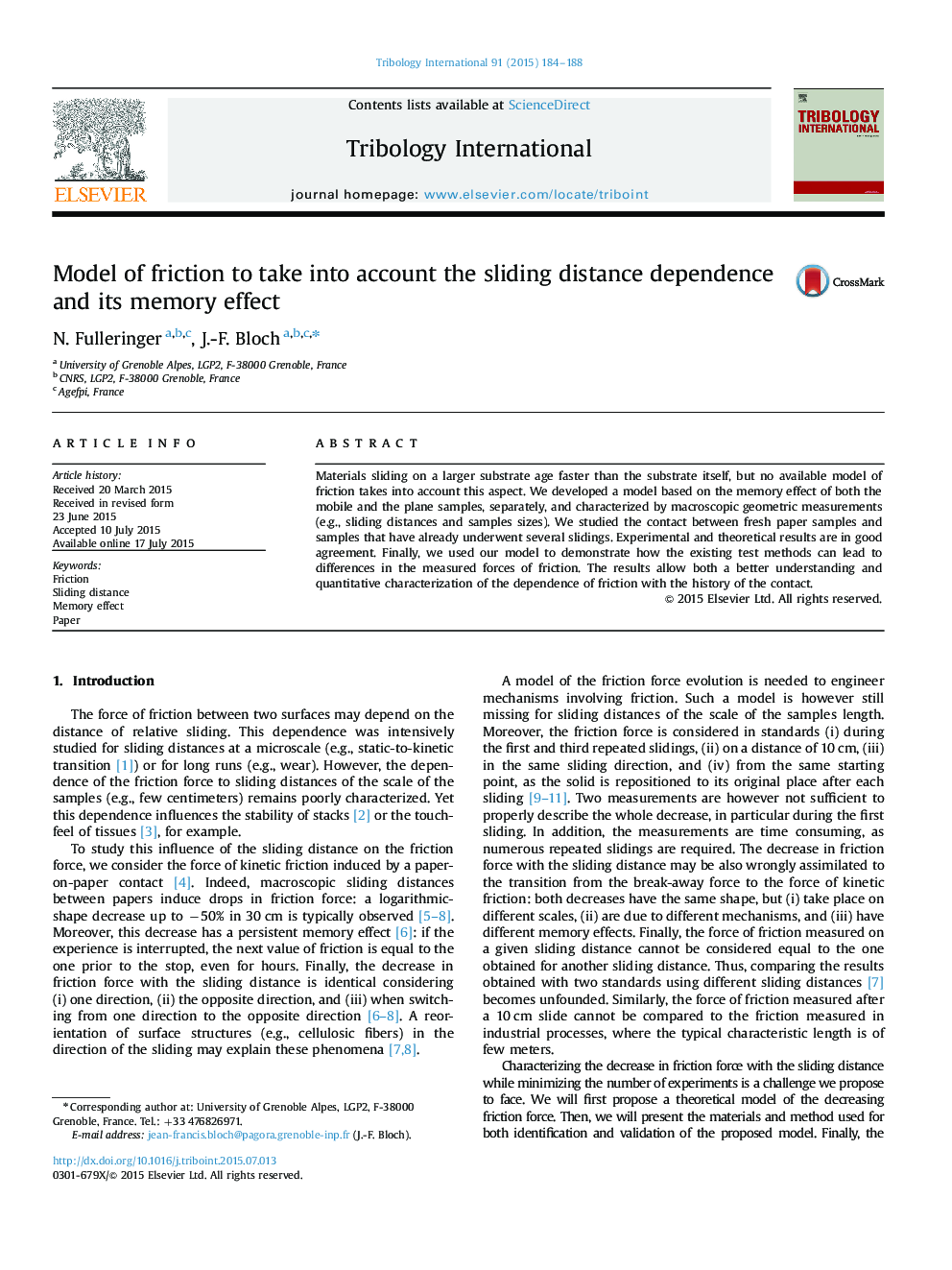| Article ID | Journal | Published Year | Pages | File Type |
|---|---|---|---|---|
| 614417 | Tribology International | 2015 | 5 Pages |
•We propose a model of friction based on simple geometric considerations.•We conduct specific experiments on samples with different histories.•The proposed model is experimentally validated.•The measurements are better characterized and understood than previously.•We show how different test methods lead to differences in friction force measured.
Materials sliding on a larger substrate age faster than the substrate itself, but no available model of friction takes into account this aspect. We developed a model based on the memory effect of both the mobile and the plane samples, separately, and characterized by macroscopic geometric measurements (e.g., sliding distances and samples sizes). We studied the contact between fresh paper samples and samples that have already underwent several slidings. Experimental and theoretical results are in good agreement. Finally, we used our model to demonstrate how the existing test methods can lead to differences in the measured forces of friction. The results allow both a better understanding and quantitative characterization of the dependence of friction with the history of the contact.
